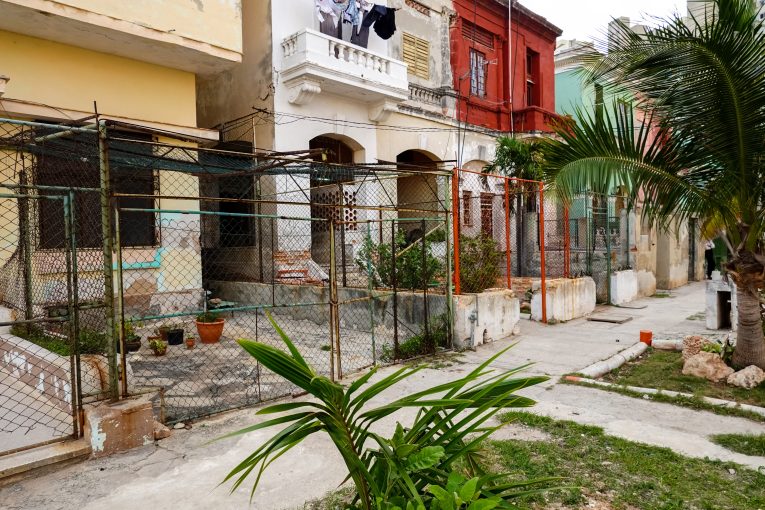

By David M. Greenwald
Executive Editor
In recent weeks, I have seen a number of people argue that we should be focused on infill rather than peripheral housing to solve our housing needs. The problem with that locally is the lack of vacant infill space and the expense of densification.
It is also worth noting that when the state legislature proposed ways to upzone—mostly through SB 9 and SB 10—many of the same critics opposed it as a burden on existing residents as well as a usurpation of local land use control.
As the League of California Cities warned, “SB 9 would allow developers to build up to four housing units on a single parcel in residential neighborhoods traditionally zoned for single-family homes. While high-density housing is part of the solution, SB 9 goes about it in the worst way. It is a top-down, one-size-fits-all approach to land use policy that fails to recognize or incorporate local flexibility, decision-making, and community input.”
Studies from entities such as the Terner Center for Housing Innovation at UC Berkeley found that SB 9 would not have a huge impact on housing.
David Garcia, policy director last August in the Bee wrote, “A recent analysis by UC Berkeley found that SB 9 could play a role in the state’s overall housing solution, but financial and geographic factors will limit its impact to just a small percentage of the state’s single-family homes.”
While the bill “has attracted fierce opposition in recent months,” he argues, “Research has shown, however, that the changes proposed in SB 9 would not lead to the wholesale changes that opponents fear.”
So what can work? California Yimby notes a new study “by Greenaway-McGrevy & Phillips (2022), (where) researchers find strong evidence that the upzoning led directly to increased housing construction, contrary to fears that upzoning would only increase land prices without encouraging more supply.”
Among the key findings is“strong evidence that upzoning stimulated construction.” Within five years of Auckland, New Zealand’s upzoning that began in 2016, an estimated 26,903 new homes were permitted as a direct result.
Basically, in 2016, New Zealand faced a mounting housing crisis and Auckland, its largest city, “ended most of its multifamily housing prohibitions with the Auckland Unitary Plan (AUP)” which “removed single dwelling restrictions on three-quarters of residential land and (tripled) the number of dwellings that could be built within the residential areas.”
Greenaway-McGrevy and Phillips conclude that Auckland’s upzoning led to the construction of over 26,000 new homes, or “approximately 5.07 percent of the dwelling stock of the Auckland region.”
Can this work in California? What about Davis?
For the last 20-plus years, the city of Davis has only permitted two peripheral housing projects—though you could probably consider Cannery one as well, even though it was not a required Measure J vote.
Can the city rely on infill to meet its current housing needs? That’s a huge question and, for the most part, upzoning is not likely to help the housing situation in Davis.
The council has been able to approve a number of multi-family and student housing projects since 2015. One barrier has been opposition from neighbors. Trackside, for instance, was a relatively small number of units, but it was delayed and blocked by litigation.
Community opposition by near neighbors led to changes with University Commons, which has also stalled if not stopped progress on redevelopment of the University Mall.
Clearly, streamlining approvals for such projects would help facilitate development of multifamily housing.
But that’s not the only barrier.
Take the Downtown Plan. That has been slowed by COVID and other considerations. The city is clearly relying on redevelopment and mixed-use housing for the downtown, which would be permitted under the new plan without changes to zoning.
But the cost of redevelopment. The cost of construction. The cost of densification are all factors.
The city is heavily relying on affordable housing in the downtown to meet its RHNA requirements, but studies and analyses call into question the viability of affordable housing in vertical mixed-use. Those same analyses wonder if such development is even financially viable at all.
That seems to be a big part of the problem. Yes, the approval process is long and uncertain. Yes, streamlining that process would facilitate infill and densification. But, even removing those barriers, the costs of redevelopment and infill are very high and might make it difficult for places like Davis to rely on infill and upzoning alone without some sort of funding mechanism, particularly when it comes to affordable—both subsidized and unsubsidized—housing.


“…the costs of redevelopment and infill are very high and might make it difficult for places like Davis to rely on infill and upzoning alone without some sort of funding mechanism, particularly when it comes to affordable—both subsidized and unsubsidized—housing.”
Yet you continue to prefer infill to peripheral development. Its funny how you consistently advocate for things that are in opposition to the outcomes you claim to want.
By the way you really don’t understand what is going on with the projects you reference. Cannery got built because it didn’t need to have a measure J vote. WDAAC has now broken ground. Sadly because of delays resulting from the need to sell the project to the voters WDAAC missed the low interest rate window that has now closed. Nishi gave up access to Richards to pass a vote and 4 years later is still trying to get access under the UP tracks. Housing delayed is housing denied.
I don’t know why you think U Mall is at risk of not happening? Brixmor, the property owner, sees U Mall as the best redevelopment opportunity in its portfolio.
Just thought I’d check in with “48 Hills”. Sure enough, they (along with others cited in the article) have concluded that the state’s RNHA housing requirements are a “farce”. Some selected passages, below (with bolded emphasis added by me):
The state’s local housing goals are nothing more than a farce – 48 hills